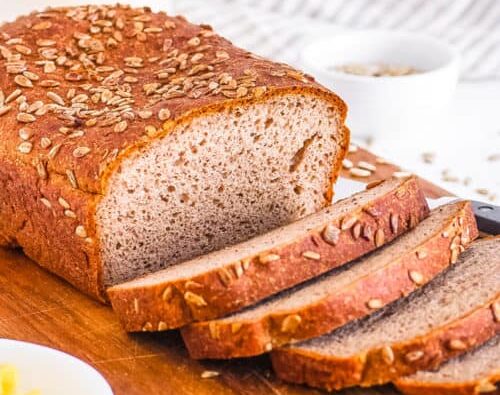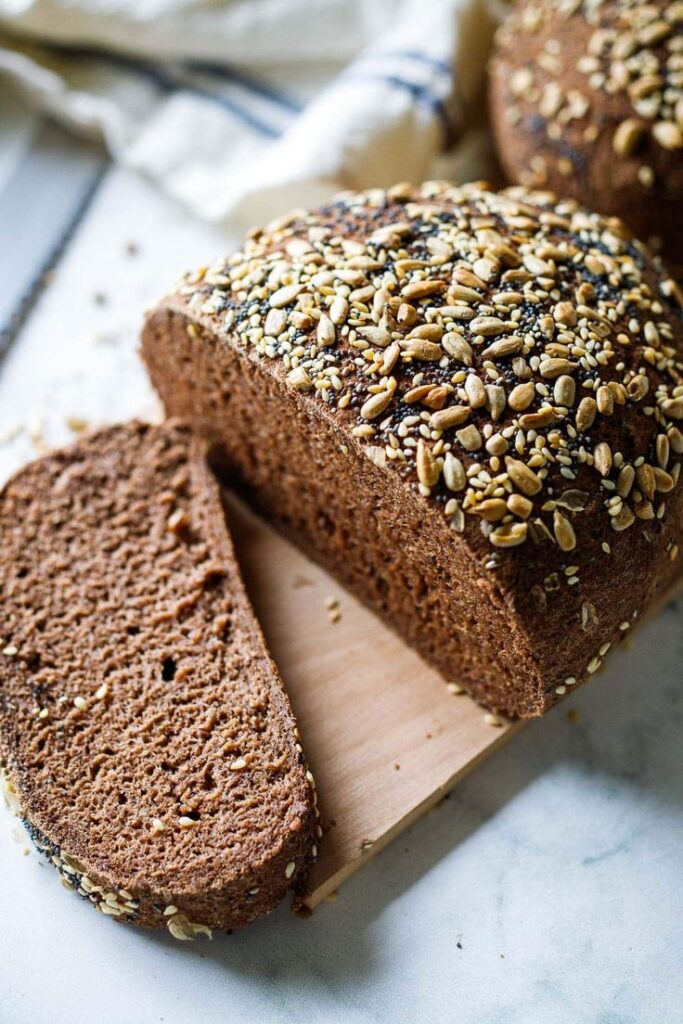
Imagine sinking your teeth into a warm, freshly baked slice of bread that’s soft, flavorful, and completely gluten-free—without ever stepping foot in a pricey specialty bakery. For those with gluten sensitivities, celiac disease, or a desire to ditch wheat, gluten-free bread alternatives are a game-changer. These homemade recipes use innovative ingredients like cauliflower, sweet potatoes, and nut flours to create breads that rival traditional loaves in taste and texture. In this article, we’ll explore the top gluten-free bread alternatives you can make at home, each bursting with unique flavors and health benefits. Say goodbye to crumbly, store-bought disappointments and hello to delicious, wholesome breads you’ll love!
Why Choose Gluten-Free Bread Alternatives?
Gluten-free bread alternatives go beyond simply swapping wheat for gluten-free flours. They embrace unconventional ingredients like vegetables, seeds, and legumes, offering diverse textures and nutrient profiles. These recipes are perfect for those avoiding gluten due to medical needs or lifestyle choices, such as paleo or low-carb diets. By making them at home, you control the ingredients, avoid additives, and save money compared to expensive gluten-free products.
These alternatives are also packed with health benefits, from improved digestion to stabilized blood sugar. Plus, they’re versatile—use them for sandwiches, toast, or as a side for soups and salads. With a little creativity, you can craft breads that are as satisfying as they are nutritious.
Top Gluten-Free Bread Alternatives
Below are five unique, easy-to-make gluten-free bread recipes that will transform your baking routine. Each uses accessible ingredients and delivers exceptional flavor and texture.
1. Cauliflower Flatbread
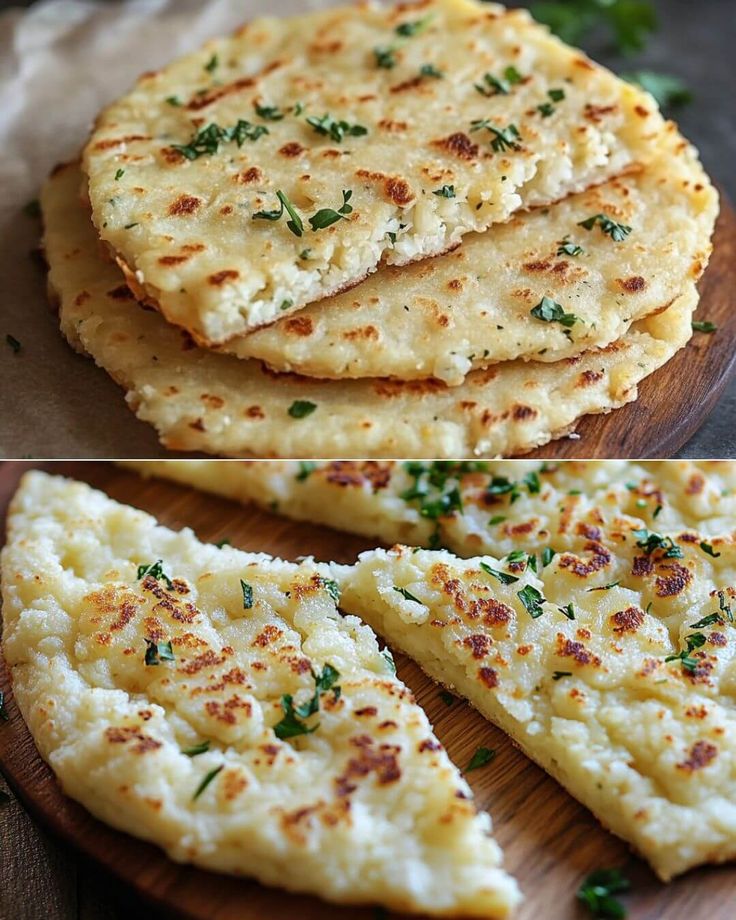
This low-carb, veggie-packed flatbread is light, versatile, and perfect for wraps or pizza bases.
Ingredients (Makes 6 flatbreads):
- 1 medium head cauliflower (about 4 cups riced)
- 2 large eggs
- 1/4 cup almond flour
- 1 teaspoon garlic powder
- 1 teaspoon dried oregano
- 1/2 teaspoon sea salt
- 1 tablespoon olive oil
Instructions:
- Preheat oven to 400°F (200°C) and line a baking sheet with parchment paper.
- Rice the cauliflower by pulsing florets in a food processor until fine. Steam or microwave for 5 minutes, then squeeze out excess water using a cheesecloth.
- In a bowl, combine riced cauliflower, eggs, almond flour, garlic powder, oregano, and salt. Mix into a dough.
- Divide dough into 6 portions and shape into flat rounds on the baking sheet.
- Brush with olive oil and bake for 20–25 minutes, until golden and firm.
- Cool slightly before serving.
Why It’s Great: Cauliflower is low in carbs and high in fiber and vitamins, making this flatbread a nutrient-dense alternative. It’s sturdy enough for toppings yet soft for folding.
2. Sweet Potato Loaf
This naturally sweet, moist loaf is ideal for breakfast toast or as a side for savory dishes.
Ingredients (Makes 1 loaf):
- 1 1/2 cups mashed sweet potato (about 2 medium sweet potatoes)
- 1 cup almond flour
- 1/4 cup coconut flour
- 3 large eggs
- 1/4 cup melted coconut oil
- 1 teaspoon baking soda
- 1/2 teaspoon cinnamon
- 1/4 teaspoon sea salt
- 1 tablespoon maple syrup (optional)
Instructions:
- Preheat oven to 350°F (175°C) and line a 8×4-inch loaf pan with parchment paper.
- In a large bowl, mix mashed sweet potato, eggs, coconut oil, and maple syrup until smooth.
- In another bowl, combine almond flour, coconut flour, baking soda, cinnamon, and salt.
- Stir dry ingredients into wet, mixing until a thick batter forms.
- Pour batter into the pan and smooth the top.
- Bake for 40–45 minutes, until a toothpick comes out clean.
- Cool in the pan for 10 minutes, then transfer to a rack.
Why It’s Great: Sweet potatoes provide complex carbs, fiber, and beta-carotene, supporting energy and immunity. This loaf is naturally sweet and pairs well with nut butter or avocado.
3. Chickpea Flour Socca
Socca, a Mediterranean flatbread, is made from chickpea flour, offering a nutty flavor and crispy texture.
Ingredients (Makes 4 servings):
- 1 cup chickpea flour
- 1 cup water
- 2 tablespoons olive oil
- 1/2 teaspoon sea salt
- 1/2 teaspoon dried rosemary (optional)
- Freshly ground black pepper
Instructions:
- In a bowl, whisk chickpea flour, water, 1 tablespoon olive oil, salt, and rosemary. Let batter rest for 30 minutes.
- Preheat oven to 450°F (230°C) and place a 10-inch cast-iron skillet inside to heat.
- Carefully remove the skillet, add remaining 1 tablespoon olive oil, and swirl to coat.
- Pour batter into the skillet and bake for 12–15 minutes, until edges are crispy.
- Slice and serve warm, sprinkled with black pepper.
Why It’s Great: Chickpea flour is high in protein and fiber, making socca filling and blood-sugar-friendly. It’s perfect as a gluten-free pizza base or dipped in hummus.
4. Flaxseed Focaccia
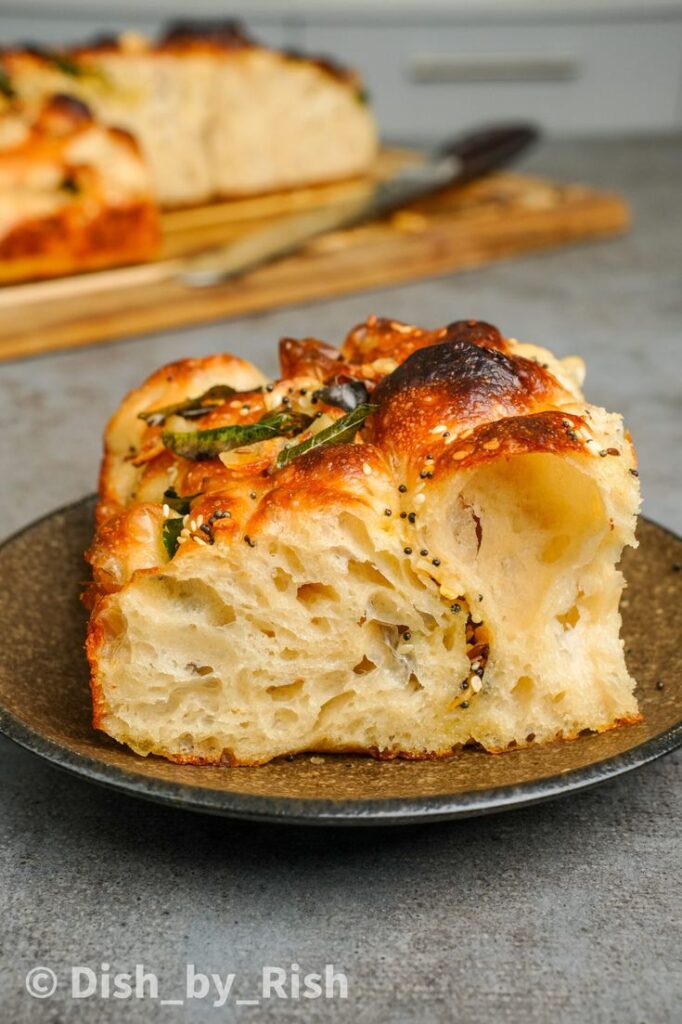
This seed-based focaccia is dense, chewy, and packed with nutrients, ideal for low-carb diets.
Ingredients (Makes 8 servings):
- 1 cup ground flaxseed
- 1/2 cup almond flour
- 4 large eggs
- 1/4 cup olive oil
- 1 teaspoon baking powder
- 1/2 teaspoon sea salt
- 1 teaspoon dried Italian herbs
- 1 tablespoon sesame seeds (for topping)
Instructions:
- Preheat oven to 350°F (175°C) and line a 9×9-inch baking dish with parchment paper.
- In a bowl, mix ground flaxseed, almond flour, baking powder, salt, and herbs.
- In another bowl, whisk eggs and olive oil.
- Combine wet and dry ingredients, stirring until a thick dough forms. Let sit for 5 minutes.
- Spread dough evenly in the baking dish and sprinkle with sesame seeds.
- Bake for 20–25 minutes, until firm and golden.
- Cool before slicing.
Why It’s Great: Flaxseeds are rich in omega-3s and fiber, promoting heart and digestive health. This focaccia is sturdy for sandwiches or dipping in olive oil.
5. Coconut Flour Cloud Bread
This airy, low-carb bread is perfect for burgers, sandwiches, or a light snack.
Ingredients (Makes 6 rounds):
- 4 large eggs, separated
- 1/4 cup coconut flour
- 1/4 teaspoon cream of tartar
- 1/4 teaspoon baking soda
- 1/4 teaspoon sea salt
- 2 tablespoons melted coconut oil
- 1 tablespoon honey (optional)
Instructions:
- Preheat oven to 350°F (175°C) and line a baking sheet with parchment paper.
- In a bowl, beat egg whites with cream of tartar until stiff peaks form.
- In another bowl, mix egg yolks, coconut flour, baking soda, salt, coconut oil, and honey until smooth.
- Gently fold egg whites into the yolk mixture, preserving airiness.
- Scoop batter into 6 rounds on the baking sheet.
- Bake for 15–20 minutes, until golden and springy.
- Cool completely before serving.
Why It’s Great: Coconut flour keeps this bread low-carb and high-fiber, while the whipped egg whites create a light, cloud-like texture. It’s versatile and keto-friendly.
Tips for Baking Gluten-Free Bread Alternatives
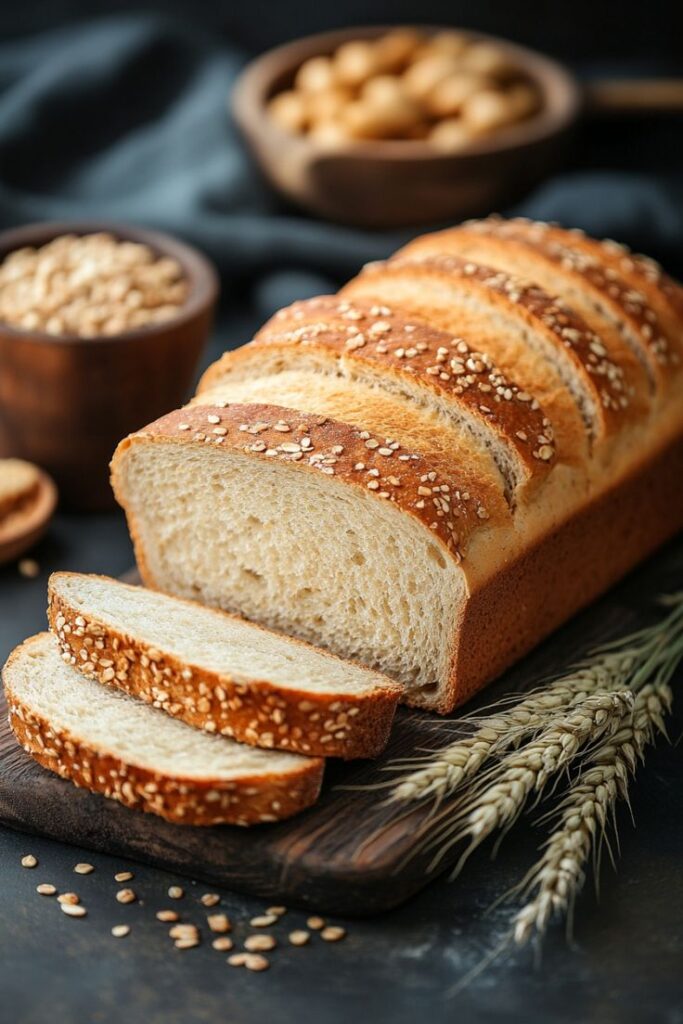
To ensure success with these recipes, keep these tips in mind:
- Use Fresh Ingredients: Nut flours and seeds can go rancid, so store them in the fridge and check for freshness.
- Measure Precisely: Gluten-free flours are dense, so use a scale or spoon-and-level method for accuracy.
- Don’t Rush Mixing: Let batters rest for 5–10 minutes to allow flours like coconut or chickpea to absorb moisture.
- Check Oven Temperature: Gluten-free breads can be sensitive to heat, so use an oven thermometer for consistency.
- Experiment with Flavors: Add herbs, spices, or seeds to customize each recipe to your taste.
- Store Properly: Keep breads in an airtight container in the fridge for up to 5 days, or freeze slices for up to 3 months.
- Use Parchment Paper: Prevent sticking by lining pans or baking sheets with parchment for easy removal.
Health Benefits of Gluten-Free Bread Alternatives
These bread alternatives offer more than just great taste—they’re packed with health benefits:
- Digestive Health: Ingredients like sweet potatoes, flaxseeds, and chickpea flour are high in fiber, promoting gut health.
- Blood Sugar Control: Low-carb options like cauliflower and coconut flour breads prevent spikes, ideal for diabetes or keto diets.
- Nutrient Density: Almond flour, flaxseeds, and sweet potatoes provide vitamins, minerals, and healthy fats for overall wellness.
- Anti-Inflammatory: Avoiding gluten can reduce inflammation for those with sensitivities or autoimmune conditions.
- Allergy-Friendly: These recipes avoid wheat and grains, making them safe for gluten-intolerant individuals.
Incorporate These Breads into Your Routine
These gluten-free bread alternatives are incredibly versatile. Use Cauliflower Flatbread for tacos or pizza nights. Slather Sweet Potato Loaf with almond butter for breakfast. Serve Chickpea Flour Socca with dips or salads for a Mediterranean-inspired meal. Pair Flaxseed Focaccia with soups or use it for hearty sandwiches. Enjoy Coconut Flour Cloud Bread as a burger bun or light snack.
To streamline baking, keep a stock of gluten-free flours and seeds in your pantry. Invest in a food processor for ricing vegetables or grinding seeds. For fun, host a baking party where friends can try your creations and share their own gluten-free recipes.
